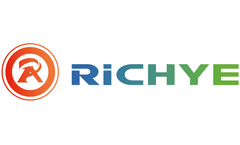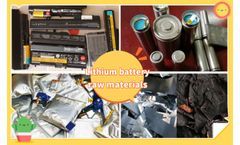Refine by
Lithium Iron Phosphate Articles & Analysis
25 articles found
Yet many RVers unknowingly shorten their battery’s life by overlooking critical maintenance routines and charging best practices. With advances in lithium iron phosphate (LiFePO₄) chemistry and smart battery monitoring, today’s RV batteries—like those from RICHYE—can last significantly longer than older lead-acid packs. ...
This guide walks you through the critical parameters, modern features, and real-world considerations—replacing generic advice with actionable insights to help you confidently select the best solution for your RICHYE lithium batteries. 1. Why Lithium Batteries Demand a Specialized Charge Controller Unlike lead-acid batteries, lithium ...
Upgrading your golf cart battery pack from traditional lead‑acid to modern lithium iron phosphate (LiFePO₄) chemistry represents one of the smartest investments you can make—whether you’re cruising fairways, navigating sprawling campuses, or touring residential communities. Lithium batteries deliver more usable ...
Energy Management System (EMS): Optional but invaluable for larger installations, an EMS monitors consumption, optimizes charge/discharge cycles, and can prioritize loads to extend backup duration. 3. Lithium vs. Lead‑Acid: Why Lithium Takes the Lead While lead‑acid batteries once dominated residential backup, lithium‑ion technology has surged ...
Lithium Iron Phosphate (LiFePO₄): Higher initial investment but up to 4,000–5,000 cycles, 90–95% depth‑of‑discharge (DoD), zero maintenance, and a 10 – 15 year lifespan. Lithium Nickel Manganese Cobalt (NMC): Higher energy density for space‑constrained installations, although slightly shorter cycle life than ...
In fact, waste lithium batteries are a "city mine" with great development value. The high-value metal resources such as lithium, cobalt and nickel inside them can not only create considerable economic benefits after being extracted through professional lithium-ion batteries recycling processes, but also effectively alleviate the pressure of ...
Abstract Lithium-ion batteries are primarily composed of cathode materials, anode materials, separators, and electrolytes. Among commercially available cathode materials, lithium cobalt oxide (LiCoO2), lithium manganese oxide (LiMn2O4), lithium iron phosphate (LiFePO4), and ternary composites are ...
Grid‑scale energy storage, therefore, is essential to smooth supply, shift excess generation to peak demand periods, and reduce reliance on backup fossil‑fuel plants. Why Lithium‑Ion? Among storage technologies, lithium‑ion stands out for its superior energy density, long cycle life, and high round‑trip efficiency (typically above 90%). ...
MPPT Charge Controller Maximum Power Point Tracking (MPPT) controllers adjust panel voltage to extract peak power and convert it efficiently to your battery bank, often achieving 95–98% conversion. 48 V Lithium Battery Bank Lithium-iron-phosphate (LiFePO₄) banks at 48 V provide stable voltage, deep-cycle capability, and ...
Whether you’re aiming for full off-grid independence or simply want backup power during grid outages, a well-designed lithium iron phosphate (LiFePO₄) battery bank can be the backbone of a resilient solar system. ...
Modern hybrid inverters intelligently switch between grid, PV, and battery sources. Battery Bank: Usually lithium-ion technology (LiFePO₄) is preferred for its high cycle life and depth-of-discharge (DoD). ...
Analyzing the financial study of energy storage is an enormous task and contains significant risk. Solar panels have been demonstrated to perform reliably for decades and operate relatively simply with a one-directional flow of ...
LiFePO4 Battery (LFP Battery) has the full name of lithium iron or Lithium Ferro Phosphate battery. It is a high-power lithium-ion rechargeable battery for energy storage, EV, electric tools, yacht, and solar systems that uses lithium iron phosphate as the ...
In the process of use, it will not emit any gas into the air and make noise.So in the long run, home energy storage batteries are a more cost-effective, efficient, and cleaner option. Lithium iron phosphate vs. ternary lithium battery, which one should I choose?(1)Lithium iron ...
The California Energy Commission added TROES to its list for its Lithium Iron Phosphate batteries. TROES qualified for approval on the battery equipment list by meeting the UL1973 safety certification. ...
However, with the passage of time, we have experienced a technological breakthrough in the field of storage systems and one of the best achievements that has been achieved are Lithium batteries (especially Lithium iron Phosphate battery - LiFePO4 battery). ...
On-site batteries store the power generated by PV system and existing diesel genset, which can run at maximum efficiency in the face of varying load conditions. Our proprietary battery designs include a Battery Management System (BMS) with 3-layers of control and 3-layers of operation protection and an AI powered Dual-Equilibrium™ Technology, proven to improve battery lifecycle & ...
In this process, the positive electrode has fewer and fewer lithium atoms, and the negative electrode has more and more lithium atoms, which will cause the battery to bulge. 2. ...
Research and development (R&D) into novel energy storage materials is important to improve the utility of energy generated from renewable sources, thereby reducing reliance on fossil fuels, a finite resource. Lithium ion batteries are a central to such initiatives, and are increasingly pivotal in green markets like that of hybrid electric vehicles (HEVs). Fossil fuels are a finite resource ...
On our website recently, we started to ask and answer a fundamental question that is critical for the global energy storage industry to address – If cobalt is so bad, why are some companies still using it in lithium-ion ...













